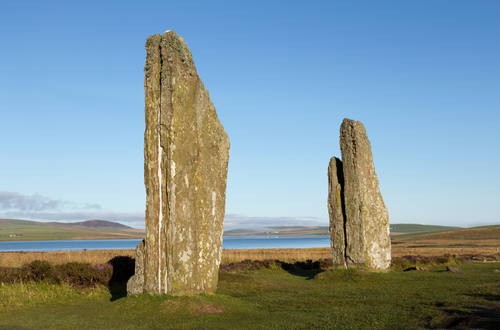
Climate Change Threat: Scotland's heritage treasure is in danger of disappearing.
As sea levels and precipitation increase, Orkney Island, Scotland's infamous archaeological sites, are threatened to disappear, experts warned.
The island is located at the north coast of the Scottish mainland and it has at least 3,000 historical sites, which some of them are older than the pyramids in Egypt.
At least 1,000 of sites located near the shore are under threat as the sea level rises. Among these is the South Howe Broch building located in Rousay. Julie Gibson of University of the Highlands and Islands said that it will soon disappear since the strong waves slowly batter the wall of the ruins.
The building is said to be dated between 400AD to 600AD. The rising sea level has been observed as early as the 1970s. The beach area loses an average of 16 inches annually since that decade. According to the data from cross-governmental coastal change assessment partnership Dynamic Coast, it is a huge leap from eight inches in the 1890s to 1970s.
Skara Brae is probably the most popular tourist spot in Orkney. According to the study, when it was occupied around 3100–2500BC, it was at least a kilometer away from the North Atlantic sea with a freshwater loch and sand dunes in between. But due to beach erosion, the distance shortened to just a few meters.
Midhowe Broch, which is a few hundred meters away from the South Howe Broch, is in better condition, thanks to the maintenance tactics done like putting up a protective sea wall in 1930. But even this building is not risk free from climate change.
According to Historic Environment Scotland (HES), average precipitation increased by 27% since the 1960s. This meant a wetter environment in Scotland. Prolonged exposure to moist can corrode the metal parts of the site, making the ground unstable and could cause the structure to collapse.
Moreover, increased precipitation also meant stronger storms to come. HES added that this is detrimental to the sites.
Other sites in danger
In October 2018, a study published in the journal Nature said that 49 out of 159 Mediterranean UNESCO World Heritage were also at risk in the same vein as Scotland's infamous site. Most of these sites were located near coastal areas, since former occupants prefer starting a community near an area with secured food sources.
Lena Reimann, lead author of the study who is also a doctoral researcher for Coastal Risks and Sea-Level Rise Research Group in Germany, said that adaptation planning is an urgent need since heritage sites cannot be replaced or rebuilt once destroyed.
Another example is the Venice in Italy, where flood occurs regularly. In 1996, the canals in Venice had risen by six feet above normal level due to the combination of strong rain, high tides, and high winds.
David Harkin, HES climate change scientist, stressed that climate changed as a result of human's actions. But there is still an "opportunity to do something about it" by changing actions that speed this up.
© 2026 NatureWorldNews.com All rights reserved. Do not reproduce without permission.





